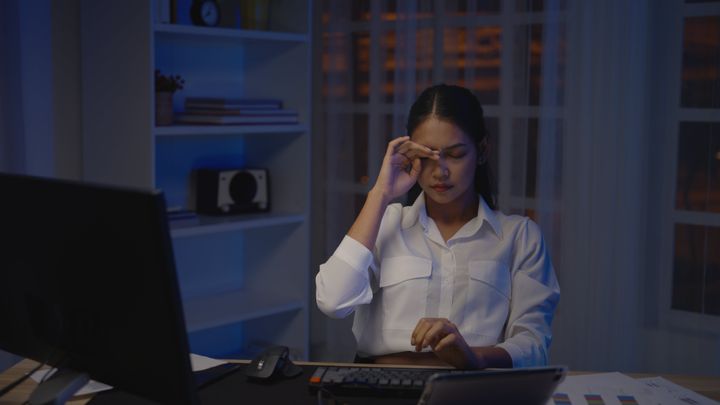
In a recent TikTok about eye twitches, doctor Karan Rajan shared that many people with the lid glitch could banish the issue by cutting back on caffeine, sleeping more, stressing less, and ― you guessed it ― cutting back on screen time.
“You actually end up blinking less” during an hours-long screen-staring sesh, the doctor revealed. That dries out your eyes and can cause glitching (as well as that awful dry eye feeling).
One way to fix the issue is by using eye drops or placing a warm, damp flannel over your lids, Dr. Rajan added. But another method he recommends turns out to be great for other conditions too ― “if you’re using screens a lot, stick to the 20/20/20 rule,” he said.
What’s that?
“Every 20 minutes, take a break and look at something at least 20 feet away, for at least 20 seconds,” Dr. Rajan explained.
“This reduces eye strain,” he added.
The Royal National Institute of Blind People also shared the method, stressing that while “Computers don’t cause permanent changes to your eyes, or make any eye conditions you may have worse, and there is no evidence that the blue light from screens is harmful,” the hack can keep your eyes more comfortable.
A study published by the Nepalese Journal of Ophthalmology, looked into computer vision syndrome (CVS) ― screen-induced eye strain ― after two hours of constant screen use.
They found that 90% of their 795 participants got CVS after the two hours, and also learned that their CVS symptoms decreased when they took frequent breaks to look at far-off objects.
How can I implement it?
Medical News Today recommends setting an alarm every 20 minutes.
And if you can’t be bothered to measure 20 feet exactly (being real, I can’t), “looking at an object more than 20 feet away works just as well. When in doubt, aim for a longer distance rather than a shorter one.”
If you’ve got a window near your workspace, gaming setup, TV, or wherever you stare at screens, then looking at outside objects might be an easy way to ensure you’re peeping far enough.
“Anyone who spends the day sitting should periodically get up and walk around, to prevent back and neck pains,” Medical News Today adds.